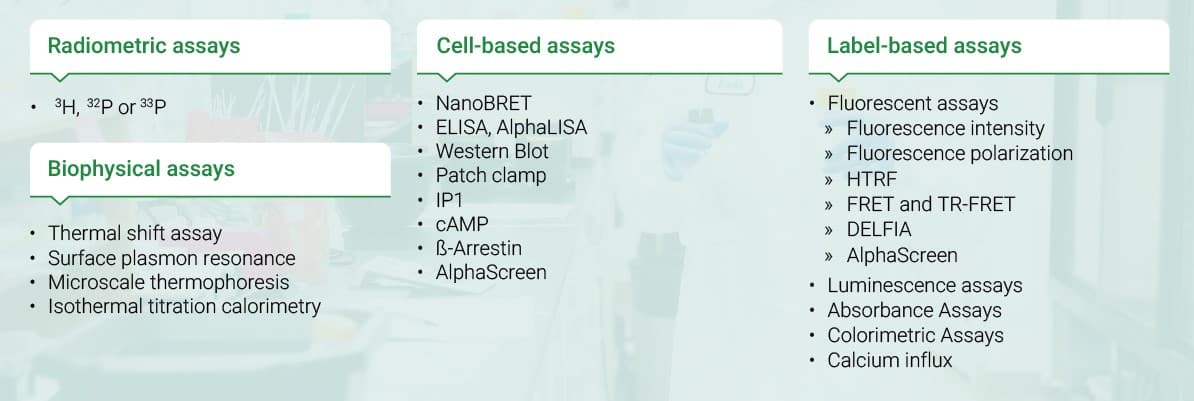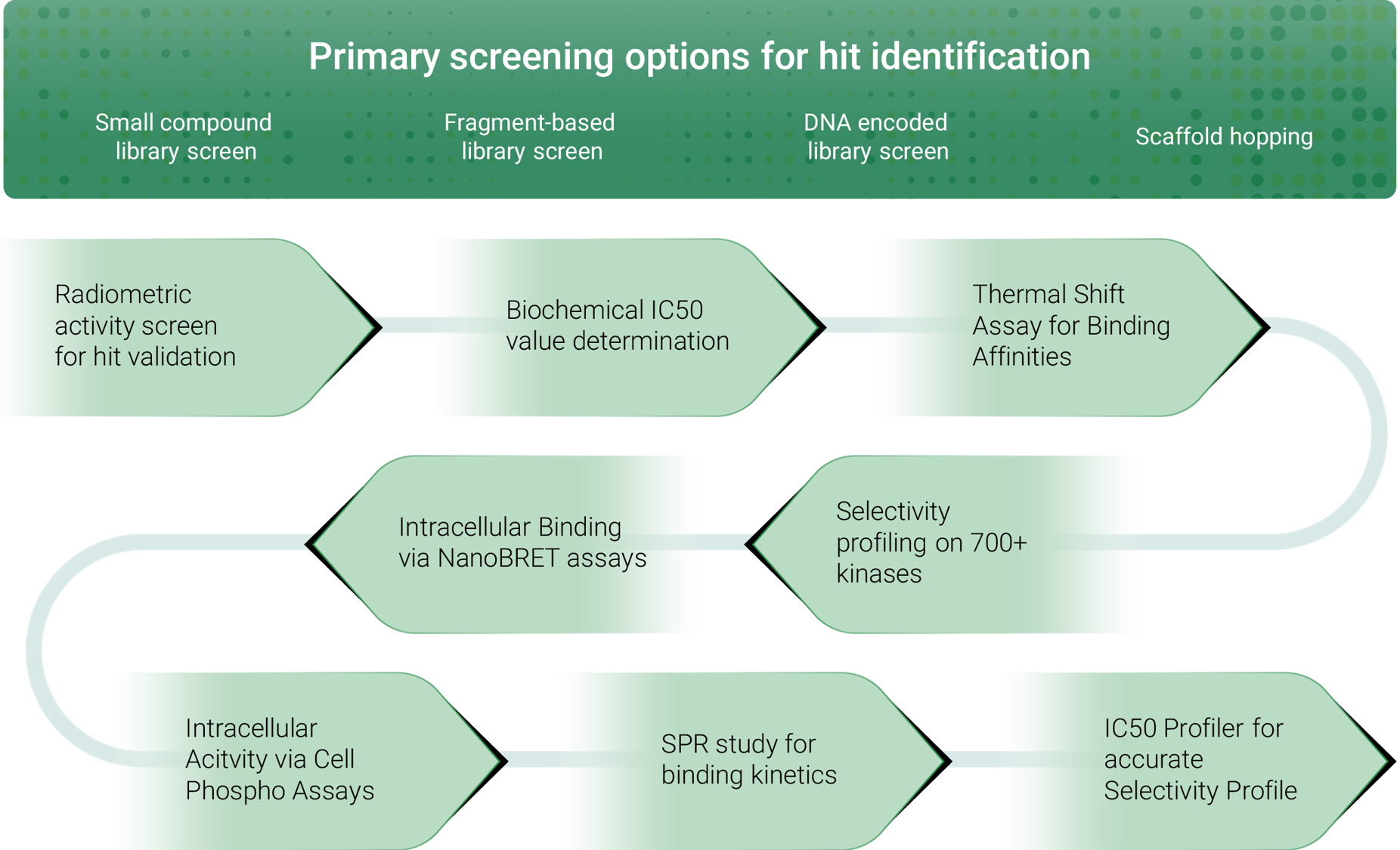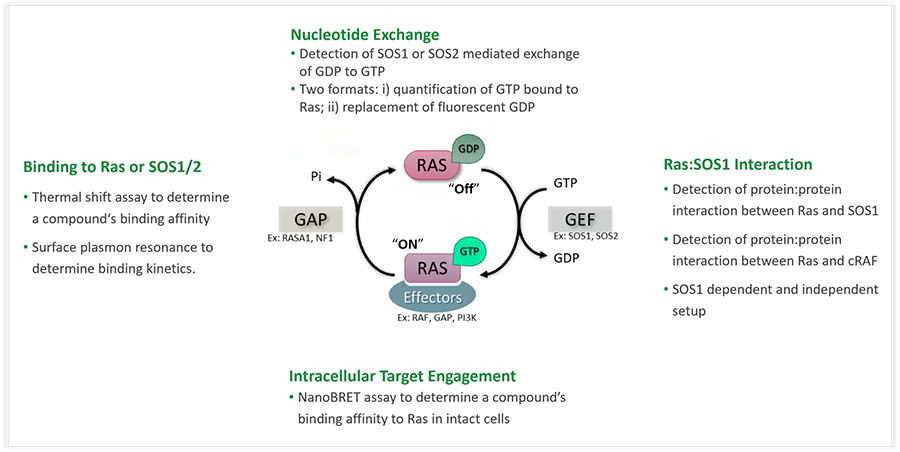Compound Screening Cascade
Reaction Biology excels in its capability of compound screening. As the industry leader, we offer the largest portfolio of established assays, including testing of enzymatic activity, binding assays, protein-protein interactions, biophysical binding, electrophysiology, and cell-based receptor functions. Together with our chemistry partners, our scientists will work with you to create the compound screening cascade best suited for your drug discovery program.
Advantage of the Reaction Oncology Platform:
- Our ambition to use gold-standard assay formats whenever possible ensures high-quality screening results in all steps of the compound screening cascade.
- Our scientists bring many years of experience in targeted drug discovery, granting smooth operations with our medicinal chemistry and ADME partners for low cycle time and optimal results.
- We help you select the right assays to gain insight into the structure-activity relationship together with the medicinal chemistry team.
Assay Formats for primary, orthogonal, and secondary screening

Each drug discovery project needs a different set of assays including (i) finding primary hits via high-throughput screening, (ii) confirming hits by IC50 value determination in biochemical assay formats, (iii) using orthogonal screening to identify false positives/negatives, (iv) perform counter assays to validate the screening results, (v) probe the mode of action to ensure on-target effects, (vi) evaluate the binding affinities and (vii) kinetics both outside and inside cells.
Rapid analog synthesis
Wherever possible, Symeres employs parallel synthesis tools for the preparation of analog sets that allow for the expedient generation of structure-activity relationships. Library synthesis is a core competency of Symeres and our organization generates tens of thousands of molecules every year using parallel reactor, purification, and analytical systems.



